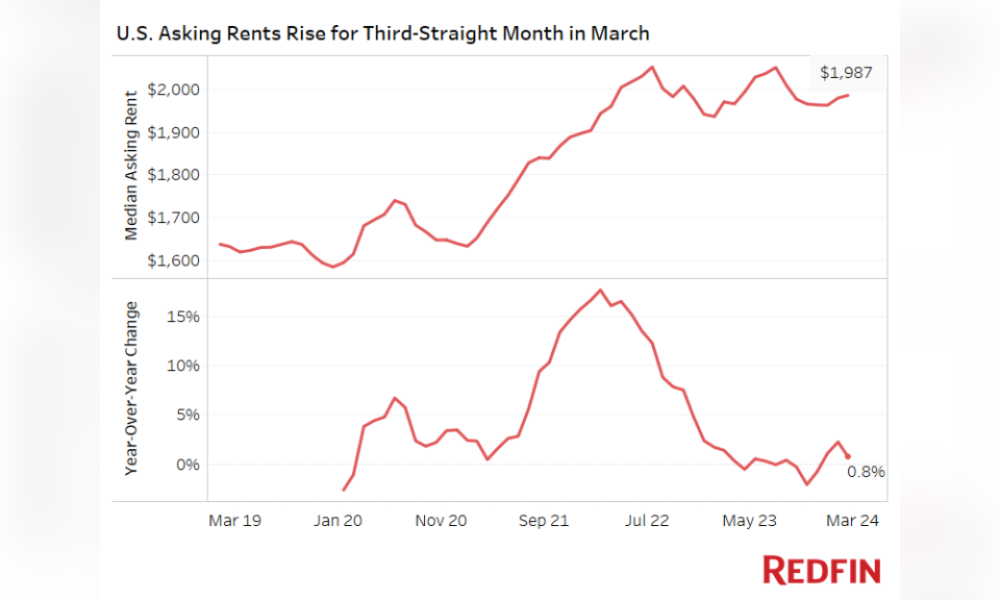Find out which areas of the US are seeing the biggest increases…

The cost of renting continues to climb, with the median asking rent rising to $1,987 in March, according to Redfin.
This uptick in rent prices follows three consecutive months of increases and comes after a brief period of decline. Despite a modest 0.3% rise from February, the growth in rental costs—driven by high mortgage rates—is intensifying the demand for rental properties.

Costs deter buyers
The average 30-year-fixed mortgage rate currently stands at 6.82%, well below the 23-year high of almost 8% hit in October, but still more than double the all-time low of 2.65% reached during the pandemic.
This has led many prospective homebuyers to delay their purchasing plans, bolstering rental demand and putting upward pressure on rents.
“Housing costs are so high that many Americans can’t afford to buy homes, but rents are also elevated, putting a lot of people searching for housing between a rock and a hard place,” the report noted.
However, the good news for renters is that rent growth has moderated significantly from the pandemic-fueled frenzy of 2022, when rents soared by as much as 17.7% year over year. Since the start of 2023, year-over-year rent growth has remained below 3%.
“During the pandemic, you saw property owners charging $2,800 a month in rent for a house that a year earlier cost $2,000,” said Heather Mahmood-Corley, a Redfin Premier real estate agent in Phoenix. “But the economy has changed, and many people are trying to curb their spending, which means it’s harder for property owners to get renters to agree to big rent hikes.”
Midwest, Northeast see biggest rent increases
The Midwest, in particular, has seen a notable rise in asking rents, reaching a record high of $1,456 in March, up 5.3% from a year earlier – the largest gain of any region. The Northeast saw the second-biggest increase, with rents climbing 3.8% to $2,504.
Meanwhile, rents in the South and West showed little to no growth, with the South experiencing a 0.3% increase to $1,656 and the West seeing a slight decrease of 0.7% to $2,365.
Read next: How will AI impact the role of loan originators?
Redfin attributed this to less new housing construction in those regions compared to the South and West. Less supply means fewer vacancies and more competition among renters, giving landlords leeway to raise prices.
“Fewer vacancies mean more competition between renters, which makes it easier for property owners to raise rents,” Redfin said. “The Midwest is also the most affordable region to live in, which helps keep demand afloat at a time when housing affordability is so strained. It has a lower-than-average unemployment rate and has recently attracted major tech companies, such as Google in Kansas City.”
Stay updated with the freshest mortgage news. Get exclusive interviews, breaking news, and industry events in your inbox, and always be the first to know by subscribing to our FREE daily newsletter.



